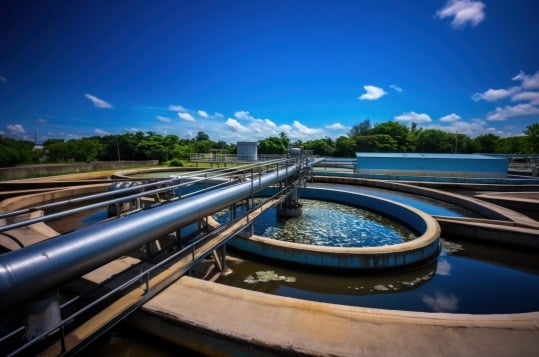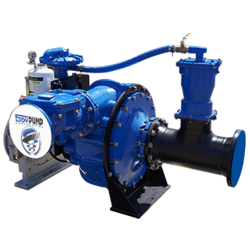Application of EDDY Pump in Wastewater Treatment



Application of Our Slurry Pumps in Wastewater Treatment

- Sludge Transfer: Sludge transfer pumps transfer sludge from sedimentation tanks, clarifiers, or other treatment processes to further treatment stages or disposal areas. The abrasive handling pump can handle sludge’s thick and abrasive nature, ensuring efficient and reliable transfer.
- Dewatering: The submersible slurry pump is used for dewatering applications, where they help separate water from sludge or solids. This process reduces the volume and weight of the sludge, making it easier to handle, transport, and dispose of.
- Digester Feed: In anaerobic digestion processes, the slurry transport pump feeds organic waste and sludge into digesters. This aids in the breakdown of organic materials and the production of biogas.
- Filter Press Feed: A slurry transport pump feeds slurry into filter presses, which separate solid particles from liquids through filtration. The pump helps maintain a consistent slurry flow into the press for efficient dewatering.
- Chemical Mixing and Dosage: A submersible slurry pump can mix chemicals or additives into wastewater for treatment. They ensure proper dispersion and chemical mixing, helping achieve desired treatment outcomes.
- Aeration and Agitation: Some treatment processes require aeration or agitation to enhance biological treatment or chemical reactions. The submersible slurry pump can circulate and mix wastewater, promoting oxygen transfer and efficient treatment.
- Desludging of Ponds and Lagoons: Sludge transfer pumps remove accumulated sludge and solids from ponds, lagoons, and other storage areas in the treatment facilities.
- Sand and Grit Removal: The heavy-duty slurry pump can remove sand, grit, and other heavy solids from wastewater before it enters subsequent treatment processes, preventing damage to equipment and ensuring effective treatment.
- Waste Activated Sludge (WAS) Pumping: Waste-activated sludge generated during biological treatment can be pumped using a slurry transport pump for further processing or disposal.
- Industrial Wastewater Treatment: An industrial slurry pump is also used in various sectors for treating their specific wastewater, which might contain a mix of contaminants, solids, and chemicals. These pumps help transfer and manage the challenging wastewater composition.
CALL FOR SALES OR SUPPORT
If you need help with Pump Selection, Sales or Engineering Support
Call 619-345-5446

Application of EDDY Pump’s Hydraulic Dredging in Wastewater Treatment

- Sludge Removal from Ponds and Lagoons: Pond dredging equipment can remove accumulated sludge, sediment, and organic matter from wastewater treatment ponds, lagoons, and settling basins. This helps improve the capacity and effectiveness of these storage areas and prevents excessive buildup of solids.
- Channel and Pipeline Maintenance: A hydraulic dredger can maintain the flow capacity of channels, pipelines, and drainage systems within the treatment plants. Removing sediment and debris prevents clogs and blockages that could hinder the movement of wastewater.
- Influent Screening: A slurry pump dredge can aid in the removal of larger debris, such as sticks, leaves, and plastics, from the influent wastewater before it enters the treatment process. This reduces the load on downstream treatment equipment and prevents damage.
- Lagoon and Pond Restoration: Dredge pump systems can restore the depth and capacity of wastewater treatment ponds and lagoons that have become shallow due to sediment accumulation. This rejuvenates their effectiveness for treatment and storage.
- Reservoir Desilting: A slurry pump dredge can remove accumulated sediments and maintain the reservoir’s capacity for treatment plants with reservoirs or storage ponds for treated effluent.
- Removing Algae and Aquatic Vegetation: A hydraulic dredger can help control the growth of algae and aquatic vegetation in treatment ponds and lagoons by removing excess organic matter and preventing excessive nutrient buildup.
- Emergency Response: When heavy rainfall or flooding leads to sediment and debris buildup in treatment systems, hydraulic dredging equipment can quickly remove the obstructions and restore system functionality.
- Aerated Lagoon Maintenance: A slurry pump dredge can assist in maintaining and cleaning aerated lagoons used for biological treatment. Hydraulic dredging ensures proper aeration and treatment efficiency by removing excess sludge and sediment.
- Intake and Outfall Maintenance: Dredging can clear sediment intake and outfall structures, ensuring that water movement in and out of treatment facilities remains unobstructed.




